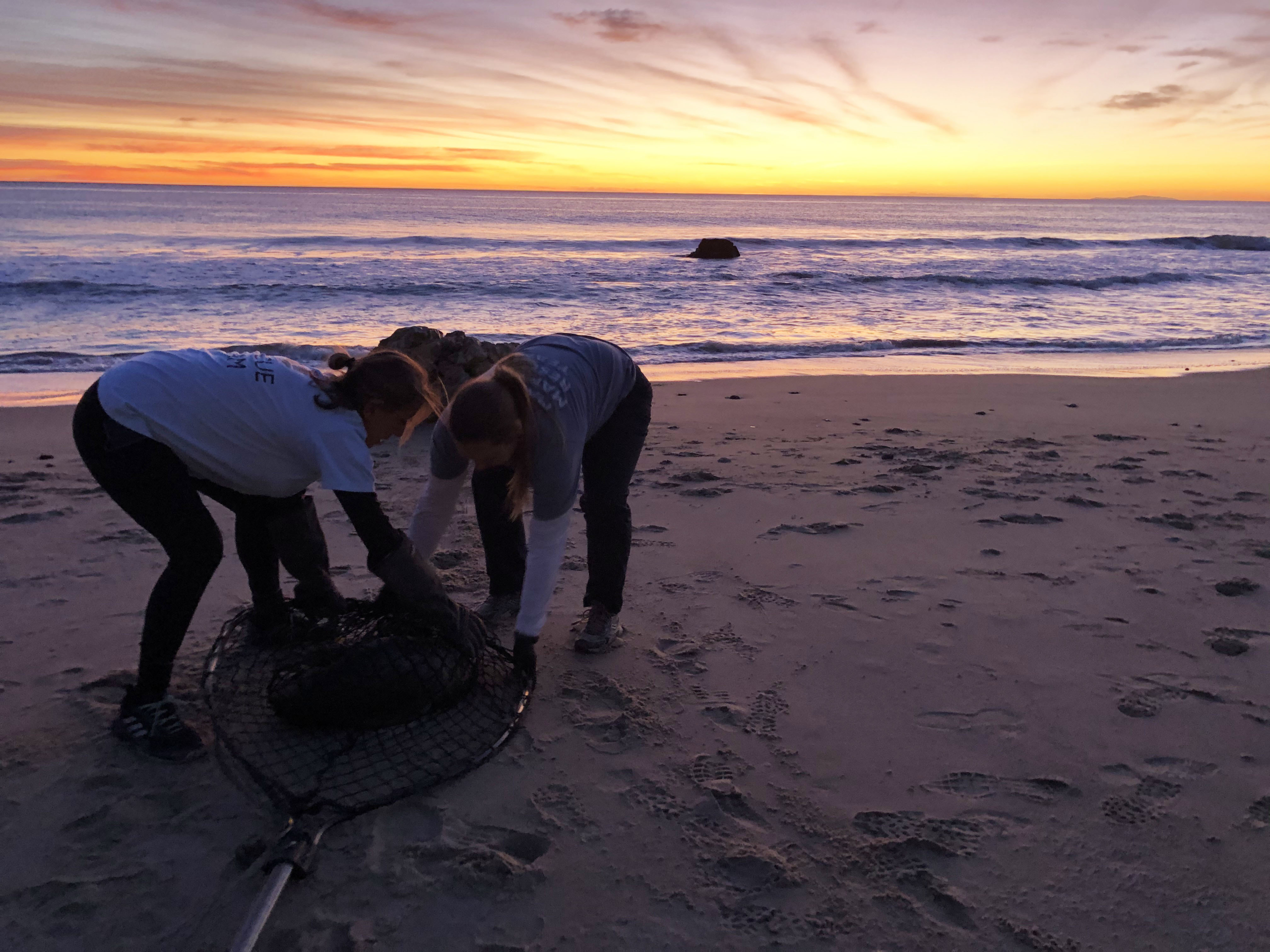Marine Mammal’s Rocky Rescues
By Heather Henderson, Marine Program Manager
The beaches in Malibu that comprise our marine mammal response area are beautiful. Much of their charm comes from the rocky cliffs adjacent to the glimmering Pacific Ocean. Two perfect examples of these rock formations are at Leo Carrillo and Point Dume Beaches. With their proximity to natural Sea Lion colonies (or haul out locations) along with the large number of visitors each day, it’s not surprising that our Marine Mammal team is called to these sites often to aid distressed marine animals.

CWC Staff carefully moves towards the Sea Lion pup, photo by Dayna Anthony
Every response presents unique challenges. Rock and cliff structures exponentially increase the difficulty of rescues. Planning, communication, and executing with safety guiding each decision are key aspects to a successful rescue. One third of our rescues this season have been atop rocky terrain.
The most challenging response this season occurred at Leo Carrillo State Beach. A young California Sea Lion hauled out during the exceptionally high tide. When the water receded, she was stranded on a cliff 20 feet up, surrounded by rocks covered with sharp mussels on one side and hard wet sand on the other. Our team discussed plans for each aspect of this challenging rescue before moving into position. Two volunteers were positioned below the animal in case she fell from the rock cliff. Two Marine Mammal staff members climbed out on the rock towards the animal, moving slowly to not startle her off the cliff. When the moment was right, a quick grab with the net captured the Sea Lion and she was rescued without injury. Using a careful approach coupled with extensive experience reading Sea Lion behavior resulted in a successful rescue. The patient (Sea Lion #20-003) has responded well to care and has been cleared for release!

The Marine Mammal Rescue Team with a Sea Lion Pup at Sunset, photo by Jackie Aramkul
Even straight forward rescues can be challenged by the shorter winter days. For safety reasons, we do not perform rescues in the dark. Thus, when the marine mammal team receives late afternoon reports, efficient access and location of the animal can be the difference between offering assistance or waiting until the next morning. We are fortunate that our state and county Lifeguards, along with members of the public are willing to meet us at the beach to aid in timely assistance for the distressed mammal. Rescues in the evening, while complicated by the low light, can lead to some beautiful photos!
